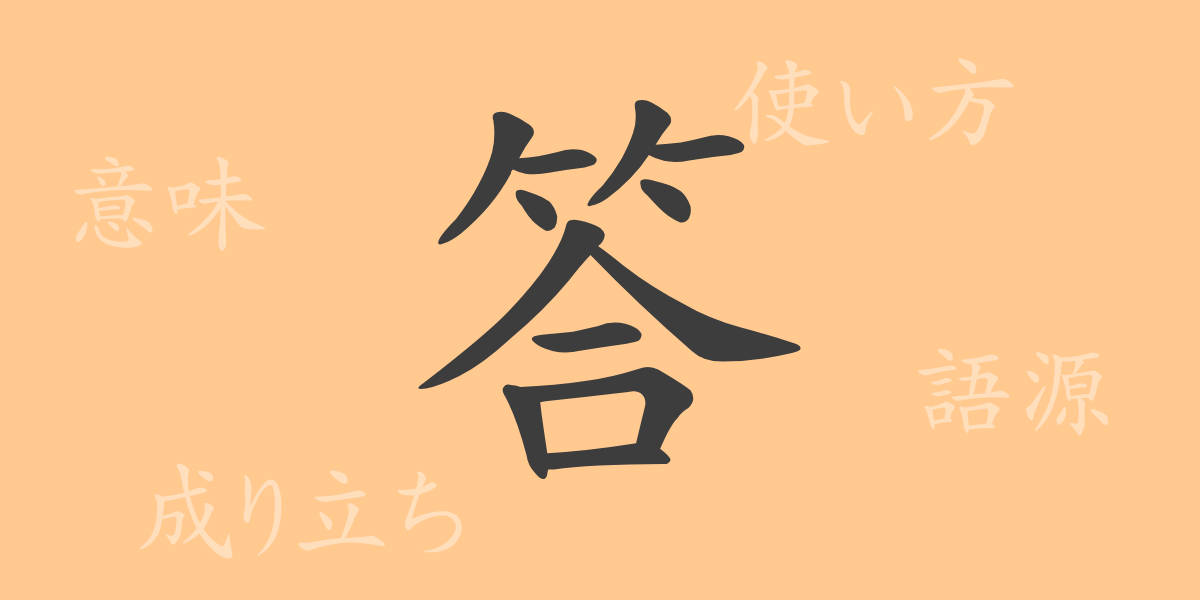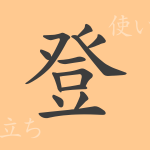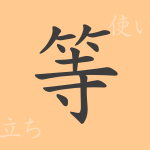Language forms the foundation of communication, and every Kanji we use daily carries deep meanings. The commonly used Kanji ‘答 (とう)’ in Japanese is no exception. This article delves into the origins, contemporary usage, and the expansive meanings of the Kanji ‘答’. It aims to deepen readers’ understanding of ‘答’ and help them enjoy a richer world of language.
Origins of ‘答 (とう)’
The Kanji ‘答’ symbolizes the act of responding with written words, represented by a brush. It combines ‘⺮ (たけかんむり)’ indicating bamboo, with ‘合’, suggesting sound, originally signifying responses in written documents. Over time, its use expanded to denote various forms of responses and solutions.
Meaning and Usage of ‘答 (とう)’
‘答’ encompasses meanings like ‘response’, ‘reply’, and ‘to solve’. It is frequently used in everyday life, for instance, answering a test question or responding to someone’s query. It is also used in polite expressions such as ‘お答えする’ to indicate responding respectfully.
Readings, Stroke Count, and Radical of ‘答 (とう)’
Let’s look closely at the readings and structural elements of the Kanji ‘答’.
- Readings: On’yomi ‘トウ’, Kun’yomi ‘こた.える’, ‘こた.え’
- Stroke Count: 12 strokes
- Radical: ⺮ (たけかんむり)
Phrases, Idioms, and Proverbs Using ‘答 (とう)’
There are many idioms and proverbs that include ‘答’, reflecting its widespread use in Japanese language. Here are some examples:
- 答案 (とうあん): A sheet of paper with answers written during an exam.
- 答礼 (とうれい): Returning a gesture of thanks or acknowledgment.
- 無答 (むとう): The absence of an answer to a question.
- 答えが返る (こたえがかえる): To receive a response to a question or request.
- 問答無用 (もんどうむよう): A phrase emphasizing that no discussion or argument is allowed.
Conclusion on ‘答 (とう)’
The Kanji ‘答’ is deeply rooted in our daily lives, playing an indispensable role in smoothing communications. Understanding its history, meanings, and applications can make us more adept users of language. We hope this article enhances your understanding of ‘答’, enriching your interest and knowledge of the words you use.

























